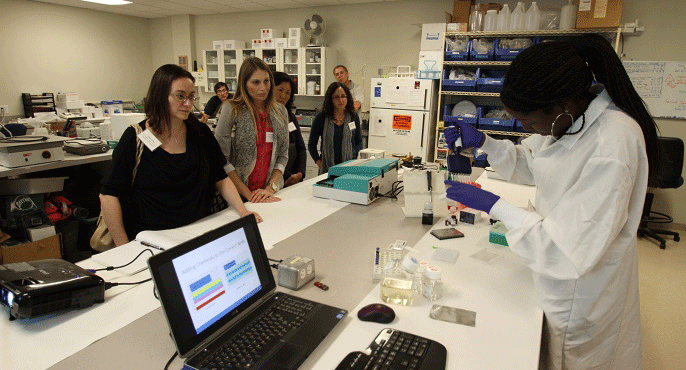One of SCCWRP’s top six accomplishments of its first 50 years
SCCWRP invests in building and strengthening scientific partnerships – and then leveraging this network to develop broad consensus on emerging science.
SCCWRP’s top six accomplishments
The six most important, managerially relevant accomplishments of SCCWRP’s first 50 years, as identified by those who’ve helped make SCCWRP the organization it is today
Technical accomplishments
Organizational accomplishments
The water-quality management community that SCCWRP serves does not act on the findings of a single, isolated study or the recommendations of a single organization. Especially when emerging science has significant management and policy implications, managers’ preference is to take action after the scientific community has reached consensus on the proper interpretation and application of that science.
Recognizing the essentiality of consensus-building, SCCWRP has prioritized nurturing strong relationships with hundreds of external partners and collaborators – relationships that have enabled SCCWRP to work toward broad consensus in areas ranging from optimal methods for tracking fecal contamination signals to biology-based scoring tools for quantitatively assessing ecosystem health. SCCWRP has a high-profile track record in the scientific community for bringing leading scientists together to do innovative, impactful science, then translating the findings into actionable, relevant insights that inform management decision-making.

SCCWRP’s commitment to consensus-building takes many forms and manifests itself in many ways. First, SCCWRP runs a visiting scholars program that encourages faculty and students from around the world to spend time working at SCCWRP. Second, SCCWRP jointly hires scientific staff who split their time with partner institutions; the practice, which dates back to 1997, encourages especially deep interactions with these partners. Third, SCCWRP encourages partners to use SCCWRP as a regional meeting center – for workshops, meetings and seminars, and as a home base for regional scientific societies.
Finally, SCCWRP expects its scientific staff to pursue collaborative studies with other institutions. Over the past 50 years, SCCWRP staff has co-authored journal and book publications with 1,408 individuals from 489 institutions. In the past five years alone, SCCWRP has co-published with 790 external collaborators. Also in the past five years, six SCCWRP scientists have guest-edited and served on the editorial boards of eight peer-reviewed journals.
